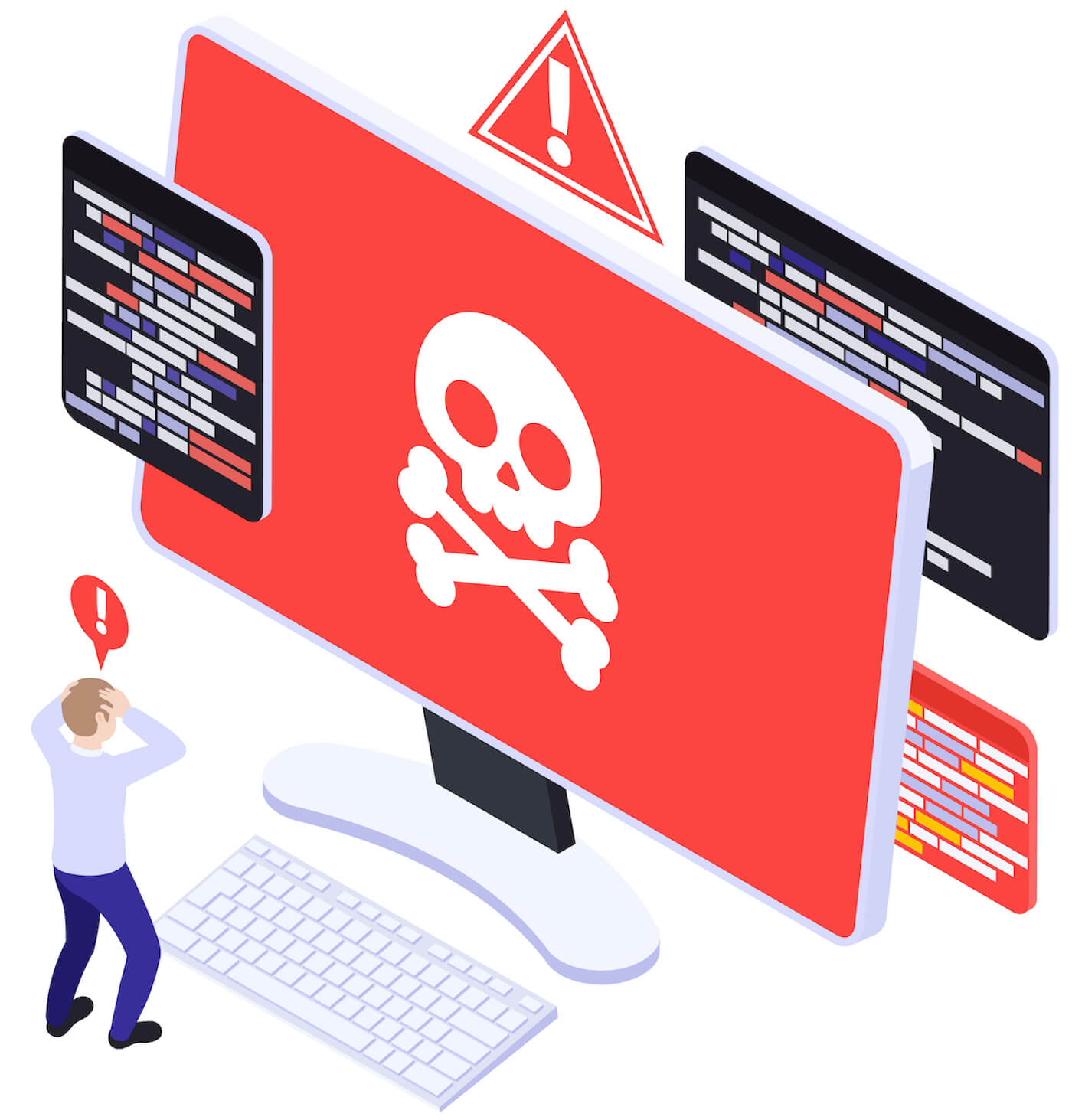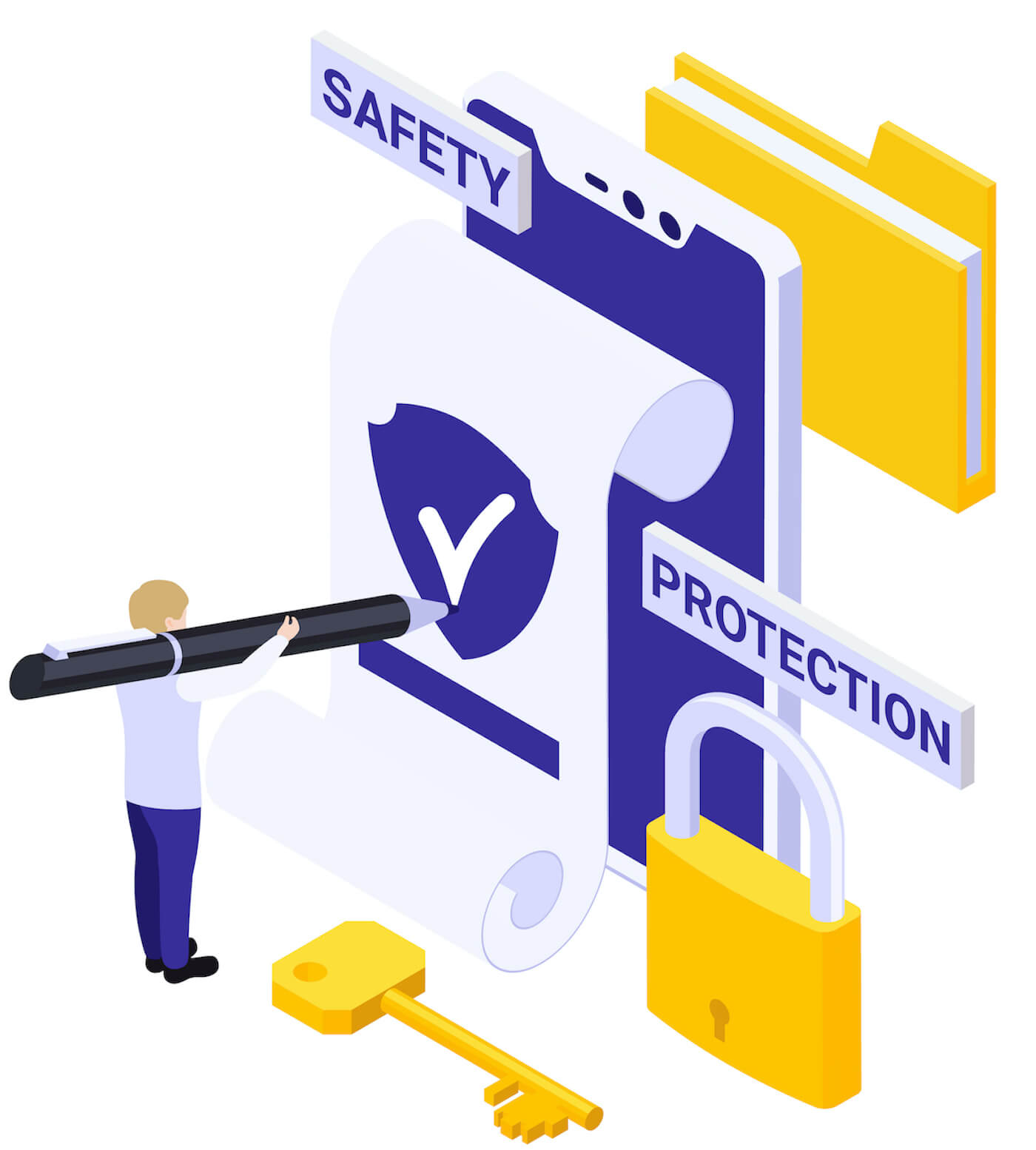Do I Really Need To Worry About Insider Threats?
Every company collects sensitive data of some sort. Whether you have to collect payment data to process a transaction or you have sensitive customer information, like personally identifiable information (PII), hackers or malicious employees might find ways to smuggle that data out of your company and into the hands of bad actors.
You may not even realize that the data your company holds on to is valuable. Well, it is, and you should protect it from all kinds of potential threats and attacks.
There are two main types of attacks on data: data breaches and insider threats. Many companies agree that their data should be protected against data breaches, and they implement antivirus or firewall software. However, you may not realize that you need to protect against insider threats as well.
Here’s what you need to know about insider threats and the impact they can have on your business:
What are Insider Threats?

An insider threat is a person or entity that can access company information from inside the organization. There are several ways that an insider threat can occur, including a negligent insider, a malicious insider, or credential theft.
One example of an insider threat will be someone who has been granted access to the company network as an employee or approved third party. The person may no longer have access to the network or company (as in a former employee), but they still have access to credentials.
An insider risk can also come from current employees who either accidentally give their passwords to bad actors, who then can run rampant on your network. 63% of insider threats happen like this due to negligence. Other types of malicious insider threats include credential theft (which occurs 23% of the time) and criminal insider threats (which happens 14% of the time).
Insiders are very troubling to businesses because they can access your company data and put your data, customer information, and business livelihood at risk.
The key things to know about insider threats are that they are hard to catch and that they cause almost half of all data attacks.
Common Types of Insider Threats
Insider threat detection is difficult. An insider threat is particularly damaging because they often have access to the internal company network, access controls, and company data. This is why access control settings, the principle of least privilege, and two-factor authentication are critical.
Insider threats include the following:
- A careless insider who works for your company and has legitimate access to data but has failed to log out of company systems upon leaving their desk
- A disgruntled employee that shares their credentials with a malicious actor for financial gain
- Employees who are bad actors themselves and intend to attack your company data
- Third-party partners who have been given credentials to your company but use those in a negligent manner
- Third-party partners who have been given credentials to your company but are using these credentials to access sensitive data for malicious means
- Third-party partners with access to your company who have been hacked
- Many unforeseen individuals with credential access to your company
The reality is that most businesses have multiple endpoints, including endpoints from current employees, former employees, or third parties. These endpoints may have logged into their work account from various devices, and those devices may be unprotected.
Since employees, partners, and associates can gain access to your company network from a range of entry points, the risk of a malicious insider attack is increased significantly.
Which Companies Are at Risk for Insider Threat Attacks?
Companies of all shapes and sizes are at risk for a potential insider threat. Since so many insider threats are due to negligent insiders, it means that your business has to develop and employ multiple insider threat prevention techniques to ensure that careless insider attacks don’t occur.
Companies that collect information from customers, including PII, sensitive data, passwords, or confidential information, are more likely to experience an insider attack.
Companies with a poor insider threat program or weak cybersecurity protecting their business are also at risk of an insider threat incident.
If your company is a high-profile company, you may also have to take additional measures to protect against a data breach or cyber attack. High-profile companies typically come with a higher risk due to a plethora of valuable data.
Why You Need Multiple Layers of Data Security

Because insider threats can hit any company type and size, you should have multiple protective measures in place to prevent insider threats and protect business data and operations.
The best way to limit an attack on your company is to introduce multiple layers of data security. Always use antivirus and anti-malware software to protect your internet. Make sure to use a firewall, a password-protected internet connection, and always secure laptops and desktops with a lock and two-factor authentication. Also, never send sensitive information over an insecure internet network or on an unencrypted network.
Tools like data discovery and data classification software can help add a layer of security to your data. In addition to employee monitoring and other data loss prevention software, data discovery and classification software increase data visibility, so businesses are alerted when their data is moved, modified, copied, or deleted.
By putting multiple layers of data security in place, you can quickly act against data threats, insider threats, and data leakages.
Even after you’ve introduced data protection systems, you also need to audit your system continually. Make sure that your employees are changing their passwords regularly and keep your device software updated.
Considering the audits may be a part of your data security regulations, like PCI compliance, GDPR compliance, and CCPA regulations, your company should already be prepared for this with audit logs and regular checks.
Stop Insider Threats With Employee Monitoring and Intrusion Detection Systems
Employee monitoring software is an ideal tool for insider threat protection due to its multifaceted productivity and surveillance features. This is a powerful tool in your network security solution that can stop an insider threat before it becomes an insider attack!
Employee monitoring comes with user or entity behavior analytics (UBA or UEBA), sophisticated software that analyzes user behavior and alerts management to weird or unusual user behaviors.
Other systems, like backup and recovery systems, can also mitigate the effect of insider threats. Insider threat attacks almost always cause downtime. This is due to the company needing to locate and isolate the cause of the attack. During this time, the company network has to be shut down. The primary data source will be unavailable (this is why companies need alternate data access methods like backdoor access hubs, data redundancy, and backup plans).
A backup and recovery system can save your company’s life in the case of a ransomware attack or DDoS attack.
Other ways of protecting against insider threats are intrusion detection and prevention systems (IDS/IPS). This system and security information and event management (SIEM) system work best when you classify the system and network areas and access each of these areas. Therefore, the system can then alert you when someone without privileges can access secure network areas or sensitive data.
Staying Protected With Employee Monitoring Software
As you can see, businesses of all sizes need to prevent insider threats. Your business may require multiple lines of defense, with things like data prevention solutions, firewalls, and insider threat detection systems; however, it is worth it—insider threats cost businesses upwards of $11.45 million in America annually.
By implementing an effective employee monitoring system and additional data leak prevention software, you can minimize the risk of insider threats, save money, reduce company downtime, and maintain your reputation with the public.
By SoftActivity Team.